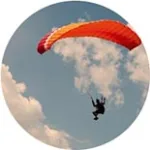- China Travel Guide
- Things to do in China
- China Attractions
- China Travel Insights
- Chinese Food
- China Weather
- China Culture
- China Tourist Visa

Things to do in China
Okay, so how do you distill all the things to do in China to a single list when there is so much on offer? It’s virtually impossible, so as part of our travel guide, we created a thoughtfully curated list of things to do in China so that whether you love deep dives into detail or simply want the bare minimum, we have you covered.
Because China is so well known for remarkable highlights like the Forbidden City and Great Wall, you may be surprised to know there is, in fact, a world of wonder further afield from the country’s capital. If you’ve never visited China, you’ll find a rich trove of treasures awaits to surprise and delight. Encompassing all areas of life
If you’re still in the research phase of your travel, this is the perfect place to gather all the details needed to create beautiful travel memories. We’ve included an initial list of places to visit in China (get your pen and paper ready), tips on China’s amazing food (you will love it!), and things to do at night in some of China’s most popular destinations (make the most of every travel minute). And if you have more questions, relax! We’re here to help. Reach out to our team of travel consultants who can guide you every step of your China travels, including the plans you make before departure.
Places to visit in China
Forbidden City
Forbidden City
There are few places in China that capture the vision, culture, and intelligence of imperial China more than the Forbidden City. With every stone, architectural design, and decorative design rich in symbolism and pragmatism, you can spend literally days wandering through this palace from the Ming and Qing dynasties. The Forbidden City was a home to emperors, courtiers, soldiers, slaves, and concubines for over five centuries, where intrigue, feuding, and mystery were part of everyday life. History is preserved beautifully in the Beijing Palace Museum, where a collection of over one million pieces of precious relics is housed. Wander solo or gain insights from knowledgeable local guides as part of a single or multi day tour.
Great Wall
Great Wall
A historical monument that spans almost 21.2 million meters, it’s not so easy to nominate , and while that makes choosing where to visit a little challenging, it does mean you have plenty of options for scaling this fascinating China travel highlight. The Great Wall is actually a collection of walls to fortify the historical northern borders of China that represent one of the country’s most significant architectural feats and demonstrations of human strength. Regardless of where you scale the wall, whether it’s at Badaling, Mutianyu, Jinshanling, or one of the other sites, be prepared to be amazed at its magnitude and the window it offers into the minds who envisaged its creation.
Terracotta Army
Terracotta Army
Including Xi’an on your itinerary? Then consider your trip incomplete unless you visit the world’s most famous soldiers – the Terracotta Army. The discovery of the Terracotta Warriors (as they are often called) by a humble local farmer belies the grandeur behind their creation. Commissioned by Emperor Qin over 2,200 years ago as his protection in the afterlife, you cannot but be amazed at the size, intricacy, and preservation of this remarkable find. A definite inclusion on any Xi’an day or China tour including Xi’an.
Xi’an City Wall
Xi’an City Wall
Still standing proud in excellent condition thanks to diligent restoration efforts, Xi’an City Wall is considered one of the finest examples of the advanced defense system which developed in China and the world at the time of its construction over 1,400 years ago. Like all monuments in China, Xi’an’s City Wall is layered with symbolism and grounded in practicality. Throughout history, the wall served many purposes and still retains great appeal for locals and visitors alike, not least because of the unique city views and step back in time it offers. A definite ‘must-see’ for your time in Xi’an.
Li River and Yangshuo
Li River and Yangshuo
Looking for a real experience of rural China? Make a journey along the Li River and a visit to Yangshuo part of your China travel adventures. A cruise along the Li River is the ideal opportunity to relax and absorb the scenery en route to Yangshuo. You’ll understand why ancient Chinese poets, scholars, and leaders have taken their inspiration from the river’s landscape. In Yangshuo, find a ‘town’ that’s grown up in recent years, while still retaining much of its idyllic rural charm. The perfect place to cycle and hike, and mix with locals.
Shaolin Temple
Shaolin Temple
For an authentic Chinese martial arts experience, Shaolin Temple has it all. As Buddhist temple set in the forest of the picturesque Song Mountain, the temple conjures up every image of idyllic mountain-top retreat for meditative evolution you can think of. Shaolin is actually a cluster of buildings with multiple intricately decorated halls that were established in the 5th century when the first Indian master introduced Zen Buddhism to China. Just as amazing is the extensive pagoda forest with its tombs commemorating monks revered over different dynasties. No visit to the temple would be complete without enjoying a thrilling kung fu performance, which legend has originated in the temple as exercise for monks.
Chengdu Research Base of Giant Panda Breeding
Chengdu Research Base of Giant Panda Breeding
As perhaps the most accessible of all the places where Chengdu pandas can be seen up close, the Chengdu Research Base of Giant Panda Breeding is located just 10 kilometers from the Chengdu city center. Established to help preserve a dwindling giant panda population the research base is home to giant pandas of all ages and sizes, including adults, teens, and cubs of course. Allow half a day to visit all enclosures and if you’re planning a more relaxed itinerary, consider visiting the Dujiangyan Base, where you can soak up a full panda volunteer experience.
Zhangjiajie
Zhangjiajie
Explore Zhangjiajie and be captivated by the breathtaking sandstone landforms that inspired poets and philosophers long before Avatar became a film that unveiled this gorgeous secret to the world. The city of Zhangjiajie is located in Hunan in China’s southern central region. Its remoteness has preserved both the idyllic landscape and minority peoples who have been its inhabitants for millennia – the Tujia, Miao, and Bai. Rich in diversity – thanks in part to the subtropical and temperate conditions, Zhangjiajie and the now-famous Wulingyuan Scenic Area, are places that regularly make it to the bucket list of China tour travelers. If you are looking for a natural China beyond big cities and bright lights, Zhangjiajie is worthy of any China bucket list.
The Bund in Shanghai
The Bund in Shanghai
The Bund must surely be one of Shanghai’s most recognizable landmarks making it hard to imagine a visit to the ‘pearl of the orient’ without a wander along this iconic boulevard. Located in the Huangpu District of Shanghai on the bank of the Huangpu River, The Bund is perhaps the most impressive promenade in Shanghai. Apart from providing a present-day glimpse into Shanghai’s glamorous early 20th century commercial past (the Bund is a legacy of stunning 1920’s architecture and design), it offers the perfect view of a more contemporary skyline punctuated by high rise buildings like the Oriental Pearl Television Tower and the Jin Mao Tower across the river in Pudong. Explore by day or night and enjoy the vibe created by the fabulous boutiques, restaurants, bars, and people who carry forward the energy of Shanghai’s past to today.
Classical Gardens in Suzhou
Classical Gardens in Suzhou
In Suzhou, enjoy the opportunity to explore and admire the exquisite classical gardens that are synonymous with ancient Chinese creativity. Encompassing the thoughtfulness, intellect, and design as only ancient Chinese craftsmen can do, a fine example of the art is evident in the Humble Administrator’s Garden, now a UNESCO World Heritage site. The gardens’ picturesque landscape harmonizes the many elements of traditional architecture, hills, lawns, flowers, and meandering streams. In the same vein, discover what inspired China’s ancient philosophers, poets, and intellectuals at Master of the Nets Garden. Here you’ll discover a synthesis of residences and buildings with lakes, grottoes, flowers, and ancient trees. For a unique and altogether different insight into China, Suzhou’s gardens should definitely find their way onto your ‘must-visit’ list for China.
Three Gorges and the Yangtze River
Three Gorges and the Yangtze River
The Yangtze River is China’s longest river, winding 6,300 kilometers west to east across the country and a Yangtze River cruise is the perfect way to slow down for a few (or more!) days in between other travel activities and destinations in China. The most popular section of the Yangtze River to take a cruise is known as the Three Gorges. Climb aboard one of the many tastefully appointed riverboats that take you away from the hustle of China’s big cities, giving you time to soak in the spectacular scenery and awe-inspiring landscapes. Experiencing the Yangtze – in all its magnitude, history and the surrounding natural beauty of jaw-dropping gorges is a once in a lifetime experience, so be sure this adventure makes it to your list of best places to visit in China.
Silk Road
Silk Road
An ancient trading route extending nearly 6,500 kilometers and originating in Xi’an, the Silk Road was a vital trade route between the Roman empire in the west and China in the east. A journey along Silk Road puts you in the footsteps of the intrepid and resourceful merchants and the many others involved in trade and commerce from centuries ago. Providing opportunities to experience diverse landscapes across the breadth of China, the Silk Road is rich in experiences. You will wonder at the commercial spirit of those who traded commodities like wool, gold, and silver and witness the influence of Christianity and Buddhism from India as trade expanded across borders.
Potala Palace in Lhasa
Potala Palace in Lhasa
A stunning icon of Tibet, visiting Potala Palace will be a travel memory you’ll always treasure. Apart from its status as a magnificent exemplar of architectural design, Potala Palace is a place where reverence meets wonder. Both pilgrims and travelers alike sense how special it is, regardless of their origins. Formerly the residence of the Dalai Lama, you’ll discover the history behind this sacred, mysterious palace, which dates back to the 7th century. There’s no question about its inclusion on the list of best places to visit in China.
We can also organise private China tour guides who speak other foreign languages
Ask us about tour guides who speak en Français, auf Deutsch, in Nihon, and many other European and Asian languages.
Food to eat in China
There is an incredible diversity of food to eat in China, so it’s wise to do your research before entering what can be a truly mesmerizing culinary world that is seemingly unlimited. From noodles to dumplings to amazing vegetarian and meat dishes, you will find the same multi-layered symbolism in China’s food that is discoverable in all other aspects of its culture. Arrive hungry for your China travels, with chopsticks in hand ready to explore China’s kitchens with us. You will love making travel food memories with this list of must-eat Chinese dishes.

Noodles
Noodles are to the Chinese what pasta is to Italians – a mainstay of Chinese cuisine that comes in many and varied forms. Every region has its own specialty, allowing you to savor specialty dishes wherever you visit. In Beijing, try Zhajiangmian (old Beijing noodles with fried bean sauce), which is a popular homestyle dish. By contrast, you can enjoy clear broth beef noodle soup in Lanzhou and the red-braised beef noodle soup in Taiwan. In Sichuan province, try Dandan noodles, while in Xian, located in China’s north, it’s impossible to go past the famous local biang biang noodle – so named for their resemblance to a belt. In the south of China, try Guilin’s rice noodles and the ‘crossing the bridge noodles’ of Yunnan, which is a rice noodle soup. And Wuhan is home to a breakfast with a difference – hot dry noodles – so start your day here fired up and ready to go.

Dumplings
Almost as ubiquitous as noodles, dumplings hold a special place in the heart of just about every Chinese person. On your culinary adventures, expect to find regional specialties, with each vying for your favor. If you’re anything like the ChinaTours.com team, you may find yourself defending your version of the ‘very best’ dumpling, and let’s face it, there is stiff competition for the prize. Choose from jiaozi (served either boiled or steamed); baozi or xiaolongbao, which are delicious steamed buns filled with mince and a juicy broth; shengjianbao, otherwise known as pan-fried mince-filled dumplings; or the Chinese version of a meat pie – xianbing – which are pan-fried oversized dumplings. And of course there’s no passing up a wonton soup while in China either. Essentially a soup broth served with floating dumplings, we dare you to eat just one while on tour!
Other famous signature Chinese dishes
Fancy expanding your palate with other famous Chinese signature dishes? Do your food research right here before departing on a Chinese culinary adventure.
Peking Duck
Peking Duck
No travel to China would be complete without enjoying an authentic meal of Peking Duck, or Beijing Duck, as it’s now called. Created during the Ming dynasty about 600 years ago, Peking duck has once considered food fit only for emperors. After the fall of the Qing dynasty in 1911, recipes for dishes like Peking Duck made their way beyond the walls of the Forbidden City and onto the streets of Beijing, so it became more readily available.
However, be aware, there is Peking Duck – and there is Peking Duck. In keeping with tradition, only the very best duck is selected and then roasted by fire. The tender, moist meat is covered by crispy, chewy skin, a feature which is achieved by air being blown into the duck to separate the skin from the fat. Peking Duck is always served in thin, well-cut slices and it is eaten with light pancakes made of millet, sliced cucumbers and shallots, and sauces, which complement the flavors of the duck.
Xi’an Burger (Roujiamo)
Xi’an Burger (Roujiamo)
Originating on the streets of Xi’an, rou jia mo is the Chinese version of a hamburger, but somehow just so much more tasty and moorish. Rou jia mo is a traditional dish from Xi’an, the capital of Shaanxi located in China’s north. The mo or bun is the main form of starch eaten by Northerners, and it is eaten either baked or steamed. For the rou jia mo, the bun is baked in a wok or pan. The meat part of the rou jia mo is slow-cooked and beautifully spiced pork belly, crafted in a way only the Chinese can do. The ChinaTours.com team recommends making space for more than just one rou jia mo, because these stars of Shaanxi cuisine are utterly delicious.
Xi’an Cold Noodle (Liangpi)
Xi’an Cold Noodle (Liangpi)
Another of Xi’an’s best-loved dishes is Liangpi, or cold noodles. Note to your inner culinaire: Liangpi translates as ‘cold skin’. Ever practical, the local Xi’an people created this dish to meet their gastronomic needs on hot summer days. And we agree. This refreshingly delightful dish is made with flat, wide noodles made with wheat or rice flour. Liangpi are typically served cold, drizzled with a sauce of chili oil, pepper, vinegar, minced garlic, and then topped with bean sprouts and sliced cucumber.
Shanghai Steamed Bun (Xiaolongbao)
Shanghai Steamed Bun (Xiaolongbao)
Chinese soup dumplings are a staple of Shanghai street food and once you’ve tried them, you’ll understand why they’ve been so popular with locals for over a hundred years. The Nanxiang xiaolongbao is most famous. These nutrient-rich broth-filled dumplings are in fact a bun that is filled both with soup (broth) and seasoned pork mince combined with shrimps, spring bamboo shoots, crab meat, crab roe, and crab oil, depending on the season.
Before launching into your first serving of xiaolongbao, be warned! There is a technique for eating them. Use chopsticks to pick up the dumpling, then dunk it in the accompanying soy and vinegar sauce. Next, place the dumpling in a soup spoon and poke a hole and drink the soup. Finally, place a piece of sliced ginger on top of the bun and eat it in a single mouthful. For those games enough to try the super-sized xiaolongbao, keep a straw handy because you’ll need it.
Xiaolongbao is recognizable for the distinctive high volume of folds – apparently, 18 is the magic number for a truly authentic xiaolongbao, however, we’re fairly certain you won’t find out because you’ll be too busy devouring these delicious dumplings.
Mapo Tofu
Mapo Tofu
Typically Sichuan (code for hot and spicy), mapo tofu has a story to it just as many other Chinese dishes do. Legend has it that Chen Mapo, owner of a Sichuan province restaurant in Chengdu, is the inspiration for this famous Chinese dish, which was so named because of the distinctive freckles or mazi on Chen Mapo’s face. Originating during the early Qing dynasty around the mid 1600’s, mapo tofu has a long history, yet it’s popularity continues today with locals and people all over China still enjoying this dish. And we can understand why. It’s hard to go past the fresh and tender tofu drizzled with a spicy chili sauce made of ground meat, wild peppers, and a broad bean paste. Each bite of tender tofu and savory minced meat combine to surprise and delight. Definitely add this one to your list of must-eats in China.
Kung Pao Chicken
Kung Pao Chicken
Kung pao chicken – also referred to as Sichuan chili chicken and spicy stir fried chicken with vegetables or peanuts – is a well-known and much loved dish from the Sichuan province. Although westernized versions of kung pao chicken are found in just about every Chinese take away, while traveling in China, you definitely want to try the real thing. Kung pao chicken is popular for its many flavors, which combine tangy, sweet, salty, and just a hint of heat.
Hotpot
Hotpot
There are over 400,000 hotpot restaurants in China, and while you may not find a house specialty in each one, there are many versions of ‘the hotpot’. Among our favorites are the popular hot and spicy Sichuan hotpot, the tasty Chaoshan beef hotpot, a healthy Yunnan mushroom hotpot, the traditional Beijing instant-boiled sliced mutton hotpot, and the fresh Cantonese-style seafood hotpot.
For those just cutting their Chinese cuisine teeth, hotpot dining involves cooking raw meats, fish, tofu, vegetables, and noodles in broth or oil, which is placed at the centre of the table for all to share and enjoy. A hotpot meal is created around different soup bases: tomato, mushroom, clear oil spicy, chicken, and pickled Chinese cabbage, as well as various dishes and noodles that are cooked in the broth. Feeling hungry? A hotpot is sure to fill the gap.
Hangzhou Braised Pork Belly (Dongpo Rou)
Hangzhou Braised Pork Belly (Dongpo Rou)
When you eat dongpo rou you will know for sure the Chinese truly mastered the art of slow cooking, because this quintessentially Hangzhou dish is braising at its best. The poet Su Dongpo was the namesake for dongpo rou nearly a thousand years ago, and although it has fairly illustrious origins, over the centuries, this dish’s name has changed from province to province. In spite of the different interpretations, the elements of dongpo rou remain the same.
A premium pork belly, prepared in the traditional red-cooking style, the flavor of dongpo rou comes from the tantalizing aroma of the brown sugar, soy, and rice wine sauce. Using a method of slow stewing, these flavors balance the meat’s lean and fat elements to create a truly mouth-watering experience.
Cantonese Sweet & Sour Pork(Gu Lao Rou)
Cantonese Sweet & Sour Pork(Gu Lao Rou)
Perhaps the dish that’s been most widely popularized in the West, gu lao rou – or sweet and sour pork – hails originally from China’s contemporary travel hub, Guangzhou in Guangdong province. Typically made using pieces of deep fried pork tenderloin, the dish is appropriately named for its combination of sweet and sour flavors, which are created with pineapple and peppers.
Crossing-the-Bridge Noodles(Yunnan Guoqiao Mixian)
Crossing-the-Bridge Noodles(Yunnan Guoqiao Mixian)
Yunnan is one of those places where you feel you’ve taken a step back in time, and guoqiao mixian – otherwise known as ‘crossing-the-bridge rice noodle soup – certainly adds to that perception. A dish that is based on love and loyalty, it is said that a scholar’s wife would prepare a bowl of noodles each day and walk the bridge to bring the noodles to him. Sadly, the noodles were always cold on arrival. Her solution? Pour boiled oil over the noodle soup to keep the ingredients hot in route. This solved the wife’s dilemma and thus the scholar was suitably fed – so well in fact that he successfully passed his exams. Guoqiao mixian is made on a chicken stock and served with meats (chicken, pork, fish), vegetables (sprouts, mushrooms), and noodles of course.
Guilin Rice Noodles(Guilin Mifen)
Guilin Rice Noodles(Guilin Mifen)
Perhaps Guilin’s best known dish is mifen or rice noodles. With a history of some 2,000 plus years, legend has it that Guilin’s rice noodles were created to meet the need of northern soldiers who found themselves fighting in the south of China, but unable (or maybe just unwilling) to partake of the rice. Under the orders of their general, rice noodles were invented, and have become a staple in China and surrounding countries. Mifen noodles are served in broth and topped with pickled vegetables, peanuts, soybeans, green onions, and chili flakes. The most popular Guilin Mifen is boiled rice noodles served with braised beef slices, crispy deep-fried pork belly and soybeans, sausage, peanut oil, and topped with freshly chopped chili, minced garlic, green onions, and pickled vegetables.
Yangzhou Fried Rice
Yangzhou Fried Rice
Coming in very closely behind sweet and sour pork, Yangzhou fried rice is Chinese dish that has been universally embraced in the West. Although there are as many versions of fried rice as there are Chinese restaurants, you may find the authentic version of the dish a little different. Fried rice has a simple ingredients list and no poetic history either. It is just considered the ideal way to combine rice, egg, ginger, garlic, spring onions, vegetables (carrots, corn kernels, peas, shredded lettuce), shrimps, soy sauce, sesame oil, and ham or char siu.
Cantonese Shrimp Dumplings(Har Gow)
Cantonese Shrimp Dumplings(Har Gow)
Har gow – the shrimp dumplings found at every dim sum service – is a tradition, and arguably the most popular dim sum dish of all time. Seriously. When served, these dumplings look like pillows soft enough for an emperor’s head to rest upon. Be sure to add this one to your essential list of Chinese eats. Said to have originated over a thousand years ago, dim sum is a large selection of small, bite-sized dishes that are usually enjoyed at brunch or lunch as yum cha in Cantonese restaurants.
Open-topped Dumplings(Shumai)
Open-topped Dumplings(Shumai)
You will find these pork and shrimp dumplings on the menu at dim sum as well. Forget the shop bought versions you’ll find in the freezer aisle of your supermarket. The real thing to be devoured in an authentic dim sum restaurant will have you asking for more, and although there are many versions, the Cantonese version is created with pork, shrimp, and black mushrooms and then topped with crab roe or finely chopped carrot.
Cantonese Steamed Custard Buns(Nai Wong Bao)
Cantonese Steamed Custard Buns(Nai Wong Bao)
Yet another Cantonese classic, steamed custard buns – or nai wong bao – are another favorite on dim sum menus everywhere. Once a symbol of status and wealth (who couldn’t be impressed by the soft, fluffy bottoms of these buns?), nai wong bao are a carry over from a time when refined food was a sign you were among the elite. Although these lovely custard buns are readily accessible now, while in China we recommend looking for an opportunity to savor an authentic version. You’ll never look back if you do.
Hong Kong Egg Tart (Dan Tat)
Hong Kong Egg Tart (Dan Tat)
A Hong Kong classic (whose origins are unknown, but most likely through British and Portuguese influences), the egg tart has been adapted to Chinese preferences. With both flaky pastry and short pastry varieties available, we challenge you to eat just one!
Want a more personal experience on China’s best tours?
Book a private or custom tour!
Things to do at night
Although we can’t possibly create an exhaustive list of things to do in China at night, we’ve captured the essentials here, focusing mainly on Beijing, Xi’an, Guilin, Chengdu, and Shanghai. Among the most popular activities you’ll find to fill your evenings in China are night markets (everywhere throughout China) and modern, larger than life shopping centres. Even if shopping is not your thing, a wander through a typical night market provides an experience of real China that will surely find its way into your collection of beautiful travel memories.

Night markets
In Xian, although the Terracotta Warriors rate as the city’s number one attraction, the night markets probably come in a close second. With a focus on food, Xian’s night markets are the place to visit if discovering authentic cuisine rates high on your travel priorities. Add the Muslim Quarter and Dongxin Street night market to your itinerary, arrive hungry, rub shoulders with locals, and sample some of the tastiest – and most unusual foods – at this intersection of culinary culture.
Read more
The night market on Chunxi Street is considered a shopping mecca in Chengdu, acclaim that arises from its location as the intersection between two commercial centres, one of which originated around 100 years ago. Literally just about anything can be found at this nexus of shopping in China (which is really saying something). You’ll discover a showcase of artisanal crafts, souvenirs, fashion accessories, local snacks, and even traditional Chinese massage. Expect to while away an entire evening here. Other famous night markets in Chengdu are Yulin night market (which only opens on weekends) and the night market on Jianshe Road.
A stopover in Guilin on the way to Yangshuo provides the perfect opportunity to spend time wandering through the Xicheng night market and Zhengyang pedestrian street, which together are the very best places in Guilin for shopping and eating. In Beijing, make time to walk around the Wangfujing commercial area, and wander alongside Huangpu River near the Bund in Shanghai to sample night markets in these cities.
Of course, if the markets don’t hold appeal for you, you could brave one or a number of the many over-sized department stores in China. Opening hours for most shopping centers and department stores in big cities are 10am to 10pm, during which time you can join with local people to enjoy shopping in the evening after a busy day.

Shows and concerts
In the interests of sharing China’s rich culture, there are shows in every city, many of which have traveled and performed internationally. You will find everything from Chinese opera, traditional folk performances, indoor and outdoor dance shows, kung fu, acrobatics, and more. Among the very best available, check what’s on offer at the National Centre for the Performing Arts of China in Beijing and the Shanghai Grand Theatre.
Bars and dining precincts
As China has opened up to the West, local demand for bars and dining precincts has grown too, such that cities in China never really ‘sleep’. Indeed, there are specific streets or areas for the bars, clubs and restaurants.
In Beijing
In Beijing
Make a beeline for Sanlitun and Shichahai. Both are popular for the many bars and clubs that are frequented by locals and ex-pats alike. And for food, you cannot go past Guijie, a kilometer-long ‘food street’ with over 150 restaurants.
In Shanghai
In Shanghai
Find yourself in Hengshan Road, the largest area for bars and clubs, or Maoming Nan Lu and Julu Road. Looking for typical Shanghai-style cuisine? Make tracks for Huanghe Road where local Shanghainese enjoy relaxed dining. And if you’re after more of a street food experience while visiting the Pearl of the Orient, head to Wujiang Road.
In Chengdu
In Chengdu
Take a trip to the riverside bar street JiuYanQiao. With attractions like JiuYan Bridge (nine holes bridge) and the covered Anshun Bridge, it’s an idyllic environment to wander at night. Include Xiang Xiang Xiang too. Roughly translated as ‘the lane of yummy food’, it’s here you’ll discover a trove of hidden culinary gems – literally (well almost) every kind of food, including Sichuan, Thai, and Japanese foods, with many restaurants now internationally famous through online and television exposure.
In Xi’an
In Xi’an
Less than a kilometer and very close to the South Gate of Xi’an City Wall, be sure to explore Defuxiang. Shortened by locals to Defu Lane, it’s considered by locals to be one of the most famous bar streets in Xi’an. Noodle lovers can find heaven on earth when they visit Dachejia Xiang. Discover a myriad of noodles that are made, cooked, and of course, sampled at the restaurants here. And if you’re partial to a more rustic gastronomic experience in Shaanxi, try the street food in Yongxingfang. * Xiang is a lane in English
In Guilin
In Guilin
Not to be outdone, Guilin offers western travelers the opportunity to savor the best of local cuisine at Zhengyang Pedestrian Street, while Shangshui Meishi Jie (Shangshui Food Street) is where foodies can enjoy local favorites and traditional delicacies. If you are traveling on to Yangshuo, enjoy a comparable experience in the town’s most well-known precinct, West Street.
China reopened borders to foreign tourists in 2023 after a long wait of three years. It is the perfect time to unleash your inner traveler and bring your China travel dreams to life. Researching in advance of your travel is one of the very best ways to make the most of your time, not only before departure but while you’re on tour as well. With decades of experience helping travelers from the USA, Canada, the United Kingdom, Australia, and Europe plan and enjoy unique experiences in China and Indochina, we’d love to do the same for you. We welcome online inquiries via direct contact, with responses delivered within 24 hours. Let us know how we can serve you.
Things to do in China by cities
Articles about things to do in China
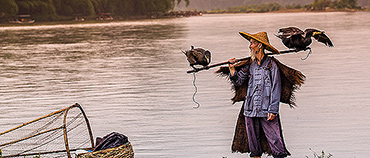
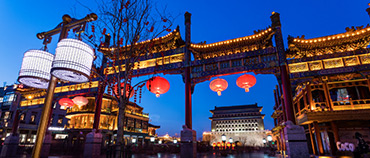
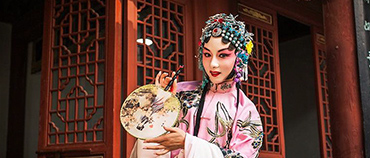
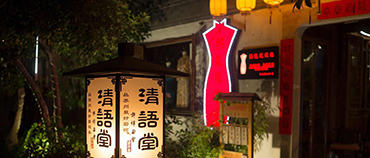
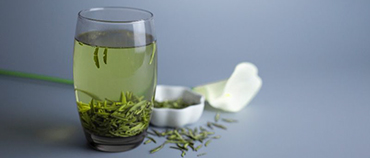
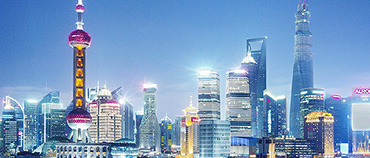
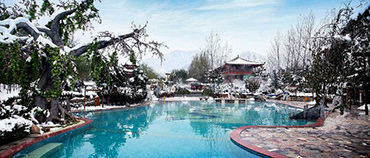
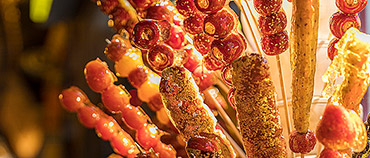






















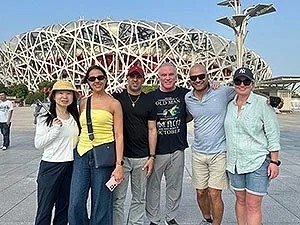

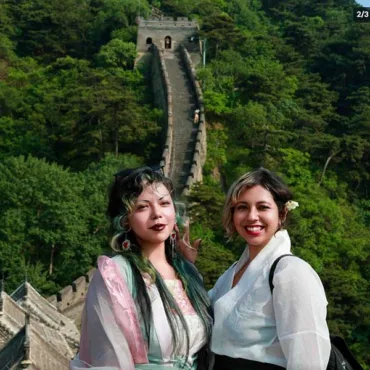
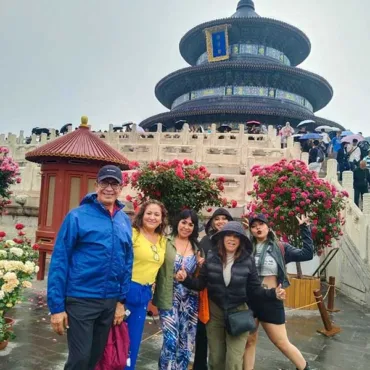

 Beautiful China!
Beautiful China!





